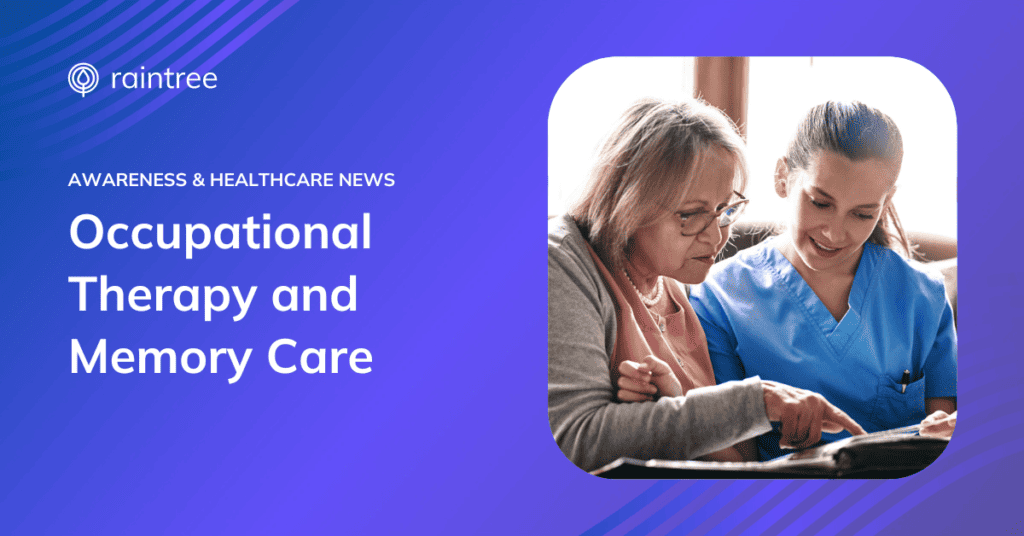Memories play a significant role in shaping who we are as individual people. Understandably, memory loss due to age is a fear shared by many, and can be exacerbated by certain health conditions or injuries. Learn how occupational therapy and memory care go hand-in-hand.
What is Memory Loss?
Broadly speaking, memory loss is the forgetting of experiences and information that someone could normally recall – it can affect both our short-term and long-term memory.
- Short-term memories are our recent memories and are how we’re able to recall information or recount things that just happened.
- Long-term memories are the recollections of information and events that happened a long time ago. These are the more permanent memories we’ve had for a while.
Causes Of Memory Loss
Memory loss and forgetfulness can result from several health conditions. Some common causes include:
- Dementia. This brain disorder can impact mental functions, including memory.
- Depression and anxiety. People living with anxiety and depression often find it difficult to remember specific memories, facts, or events.
- Thyroid disease. The thyroid produces hormones that regulate the body’s organ functions, including the brain. A malfunctioning thyroid can result in impaired cognitive function.
- Diabetes. Consistently high blood sugar levels can damage the brain over time, while vice-versa, low blood sugar levels can often cause chronic confusion.
- Alzheimer’s disease. As one of the most well-known types of dementia, Alzheimer’s damages and destroys brain cells. It begins with mild memory loss that gradually becomes more severe.
- Stroke and head trauma. Short-term memory loss following a stroke is not uncommon, although long-term memory is rarely affected. While a head injury can impact both short and long-term memory regions of the brain, there are cases of memory returning after the injury has healed.
In addition to these, there are other causes of memory loss — some reversible, some not — making it important to recognize memory loss indicators.
Indicators Of Memory Loss
Memory loss can be very jarring and disruptive, especially when a loved one begins to display strange behaviors. These are important indicators of the early stages of dementia:
- Repeatedly asking the same question
- Mixing up words
- Difficulty remembering common words when speaking
- Familiar tasks take longer to complete
- Misplacing items by putting them in inappropriate locations
- Becoming lost in a familiar area while driving or walking
- Experiencing mood or behavioral changes for no apparent reason
Following a stroke, there may be memory loss in differing forms:
- Vascular dementia involves the loss of thinking abilities and is common post-stroke.
- Verbal memory loss may include the inability to recall names, stories, and information related to speech and language.
- Visual memory loss includes the inability to recognize shapes, faces, and routes as well as the inability to remember things seen.
- Informational memory loss impacts the ability to learn new things or recall information and skills previously learned.
Memory loss can often be improved or even reversed with proper specialized care such as memory care services or dementia care from an occupational therapist.
Occupational Therapy and Memory Care
Working memory is used to complete tasks or follow multi-step directions by holding thoughts and information in mind until needed. It allows us to build on the information we already know to solve problems and accomplish tasks. The ability to cook, bathe, dress, follow directions, engage in conversations, recall phone numbers, and complete other activities of daily living are all examples of working memory in use.
Occupational therapy can help people compensate for memory loss and maintain their maximum level of independence. Whether patients reside with a family member, in a nursing home, at a memory care facility, or in a senior living center, occupational therapy can help individuals improve their mental health, strengthen their working memory, and manage their cognitive impairment.
While not all memory loss can be reversed or restored, occupational therapy and memory care can provide non-pharmacological interventions that help improve patients’ quality of life. Some common activities an occupational therapist might use include:
- Image matching targets visual memory skills and can be adjusted according to the patient’s level of ability.
- Word matching targets verbal memory skills and can be altered to various levels of difficulty.
- Item categorizing strengthens working memory by sorting items such as pictures, household items, or words into categories
- Task sequencing helps strengthen working memory through activities such as doing laundry, following recipes, and setting the table.
- Aerobic exercise or resistance training is designed to pinpoint a specific area of the brain to strengthen.
- Adaptive aids and environmental modifications promote safety and independence in activities of daily living and are common in caring for those with cognitive impairment. Environmental modifications may be as simple as posting descriptive signs on objects a patient may struggle to identify. Likewise, low-level technology such as attaching lights to a motion sensor is commonly used.
Software for Occupational Therapy and Memory Care
Occupational therapy and memory care are essential services. For occupational therapy practices that need to balance clinical care and the administrative duties of managing a practice, Raintree’s all-in-one EMR and practice management software for Therapy and Rehab makes it possible to streamline everyday tasks through data-driven automation and configurable tools that meet the needs of today’s therapy and rehab providers.
In addition, Connect, Raintree’s patient engagement platform, makes it easier than ever to offer patients continuity of care throughout stages of treatment and recovery. With personalized messaging, online self-scheduling, and automated campaigns alongside our embedded telehealth tools, therapists can devote more time to delivering high-quality care to more patients, all while achieving better outcomes.


